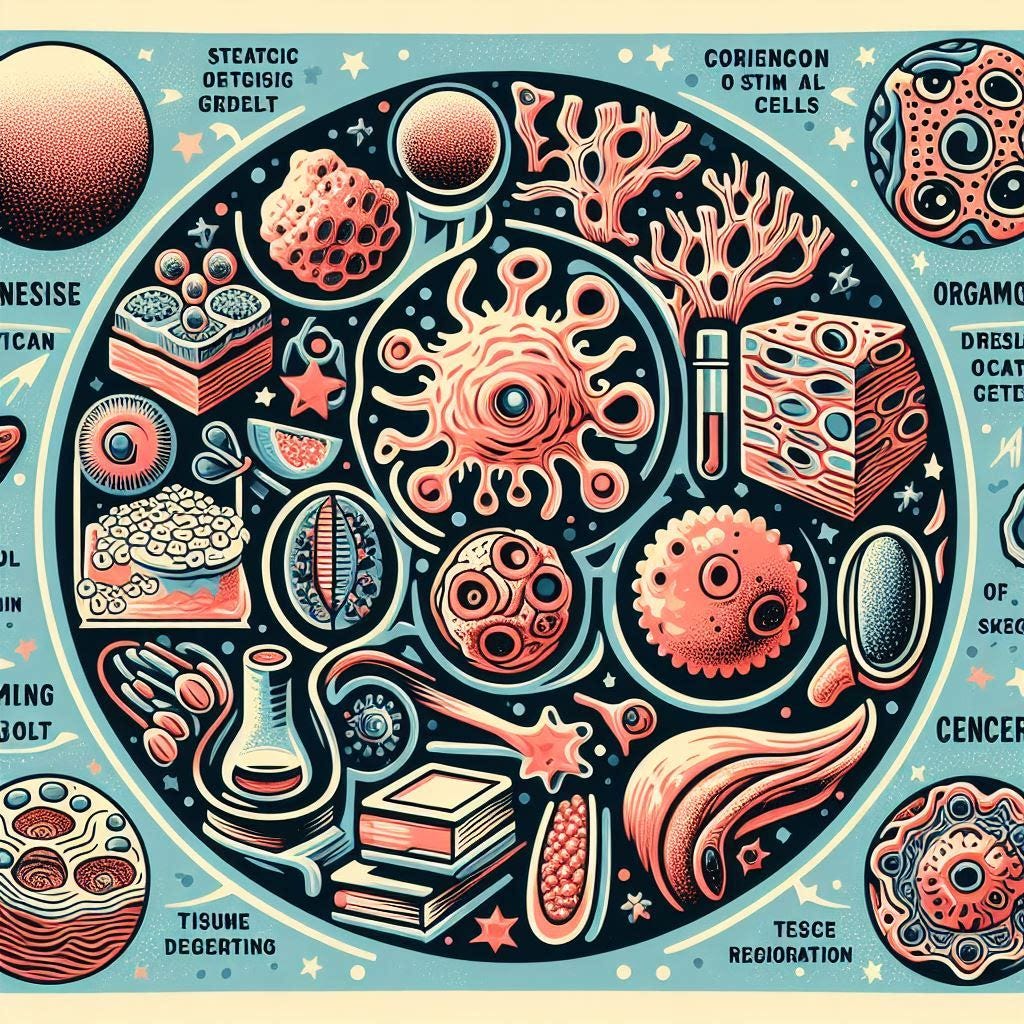Cancer X Stem Cells
Have you ever noticed the similarity between tumorgenesis in cancer and organogenesis due to stem cells? Studies do reveal this remarkable coincidence! What if it is not a coincidence…let’s dive deep
Have you ever noticed the similarity between tumorgenesis in cancer and organogenesis due to stem cells?
Studies do reveal this remarkable coincidence! What if it is not a coincidence…let’s dive deep into this matter…
From studies of stem cells it is clear that most tissues have their own stem cells. These help it in proliferation, response to injury, recovery, and new organ formation. These cells have regulated self-renewal properties. Also, many tissues are present that don’t have their own stem cells. Yet, they also recover from injury by responding to different signalling pathways that monitor the proliferation of differentiated cells.
Experiments in model organisms like mouse shows that stem cells form a heterogeneous group that maintains a hierarchy. They are like multipotent progenitors that give rise to three kinds of cells:
The long-term self-renewing cells that proliferate throughout their lifetime.
The short-term self-renewing cells arise from the previous ones. These proliferate for a shorter duration and then differentiate into specific cell types based on the environment.
The multipotent progenitors that differentiate into designated cell types rarely proliferate.
The exciting thing is that even the cancer cells have a similar hierarchy.
This difference in the group is due to asymmetric cell divisions, which can also be noticed in cancerous tumours.
Does that mean stem cells can be a potential target for oncogenic transformations?
It is easier to maintain a process than to activate it ectopically. Since stem cells already possess this self-renewing property, they form a major target for oncogenic transformations. Moreover, the progenitor cells could also be transformed if they already contain mutations from the proliferating cells, and a single mutation can bring oncogenic transformation. Experiments suggest that progenitor cells showing oncogenic transformations already have mutations in them accumulated from the long-term self-renewing cells and short-term self-renewing cells.
Thus, it proves that stem cells are the primary targets for oncogenic transformation.
Could oncogenic transformations be brought out in stem cells without any mutations?
Studies have shown that signalling pathways such that the Wnt , Notch, and Sonic Hedgehog play a significant role in stem cell development. Dysregulation of these pathways have shown cancerous proliferation in stem cells. Recent works on colon cancer have shown that deletion of tumour suppressing gene APC, which happens to be a negative regulator of Wnt pathway elevates Wnt pathway, leading to tumour formation. Moreover, increased beta-catenin production (a downstream regulator of the Wnt pathway), enhances the signalling process, thus increasing cancerous cell production. Mutations that deregulate signalling pathways or changes in the molecules that hinder these signalling pathways can make cancerous transformations in stem cells.
Why does this oncogenic transformation occur?
Studies on haematopoietic stem cells show that cell death regulators homeostasis in these cells. So, cells express oncogenes to escape apoptosis. As mentioned earlier, signalling pathways are mainly responsible for Wnt. In hematopoietic and epithelial stem cell environments, overexpression of TCF4 (a transcriptional mediator of Wnt) is seen during cancerous transformation. Experiments leading to the absence of this factor showed absence of tumours as this led to the exhaustion of the undifferentiated progenitors. Similarly, studies on Axin which is an inhibitor of Wnt pathways portrayed that its increasing concentration declined the HSC proliferation suggesting Wnt being the major pathway for oncogenic transformation.
Are only the stem cells the potential target of cancer?
Certainly not. Mutations in differentiated cells sometimes can lead to the same. They enhance their dedifferentiation to attain the self renewal property or sometimes the cells that undergo dedifferentiation in response to different signals could express the potential to form cancerous tumours. For example T and B lymphocytes generally undergo clonal expressions to produce memory lymphocytes. An encounter with antigens triggers their proliferation, thus could be a potential target of oncogenes expression.
But do all cells in the cancerous tumour have self-renewing property?
Experiments using Xenografts and lineage specifications show that only a few percentage of the cells in the tumour have proliferative property while the rest do not have this property. In some other experiments it is shown that isolated cancer cells located far away from tumours don’t generally proliferate and high chances of being killed due to immune responses.
Conclusion
Exploring the similarities between tumorigenesis and organogenesis has unveiled that stem cells play a pivotal role in both tissue regeneration and cancer development. This research highlights how the inherent self-renewal and differentiation abilities of stem cells can, under certain conditions, lead to oncogenic transformations. Key discoveries point to mutations and dysregulation of signaling pathways, such as Wnt, Notch, and Sonic Hedgehog, as crucial in this process. These insights not only deepen our understanding of cancer's origins but also open avenues for targeted therapies. Despite stem cells being primary cancer targets, differentiated cells can also contribute to tumorigenesis, underscoring the complexity of cancer and the need for advanced, multifaceted treatment strategies. The revelation that only some cells within tumors possess self-renewing capabilities further stresses the importance of ongoing research to develop more effective cancer treatments.





